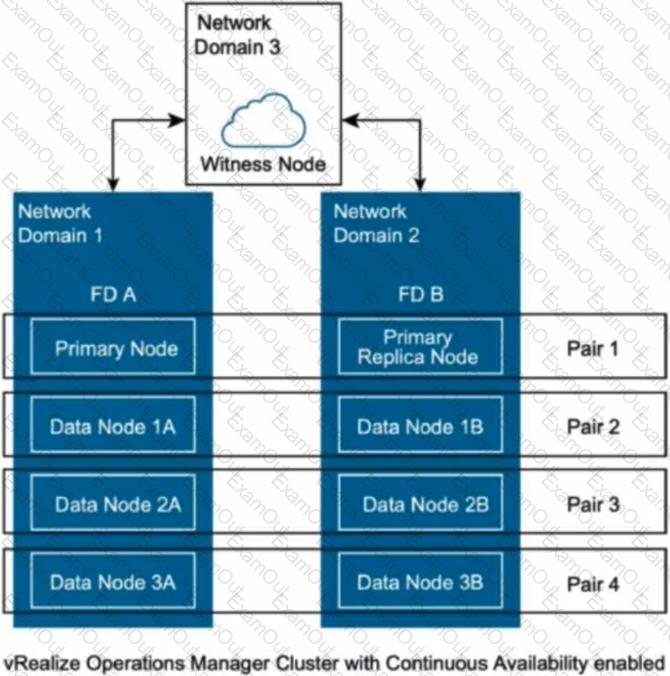An architect is planning an installation of VMware Aria Operations. Currently, the vSphere management cluster reports CPU contention which is not recommended for a VMware Aria Operations installation.
To mitigate any potential VMware Aria Operations performance issues, which two design decisions should be made? (Choose two.)
Which design decision should an architect make to support continuous availability in VMware Aria Operations?
After an organization completed an audit of their vSphere environment, they found that virtual machine deployments weren’t consistent. They weren’t using appropriate vSphere tags, resulting in confusion around who owned what virtual machines. Going forward Aria Automation has been chosen to bring consistency to their deployments and day two management. The organization wants to make sure the resources of each department are tagged appropriately.
Which two options will meet the technical requirements? (Choose two.)
An architect is designing a new VMware Aria Cloud Management solution. During the requirements gathering workshop, the customer made the following comments:
The monthly uptime target of the cloud management solution must be 99.9%.
All components of the cloud management solution must be deployed with a N+1 redundancy.
When creating the design documentation, how should these requirements be classified?
An architect is designing a VMware Aria Operations for Logs cluster. Due to budget constraints the organization would like to use existing components as much as possible.
What should the architect choose as the load balancing solution for the VMware Aria Operations for Logs cluster?
A customer is deploying VMware Aria Operations for Logs in their data centers. The customer has the following:
Three data centers in three geographical locations.
Each site has 1,000 logging sources that send events to VMware Aria Operations for Logs.
The customer has the following requirements:
Minimize the resources footprint in the management cluster where VMware Aria Operations for Logs will be deployed.
VMware Aria Operations for Logs must be highly available with no single points of failure.
Logs collected from any data center must be protected against site failure.
Which three design decisions would the architect choose to achieve the requirements? (Choose three.)
An architect has been asked about migrating a client’s solution from vRealize Automation 7.x to VMware Aria Automation 8.x. One of the requirements is to continue to build custom cloud templates.
Which component of a VMware Aria Automation solution will fulfill this requirement?
Refer to the exhibit. An architect has created a logical design for VMware Aria Operations.

The architect has included Continuous Availability as part of the design.
Which scenarios does this design protect against. (Choose three.)
An architect is responsible for designing a Cloud Management solution for a customer.
Which two constraints should the architect detail in the design for this customer? (Choose two.)

